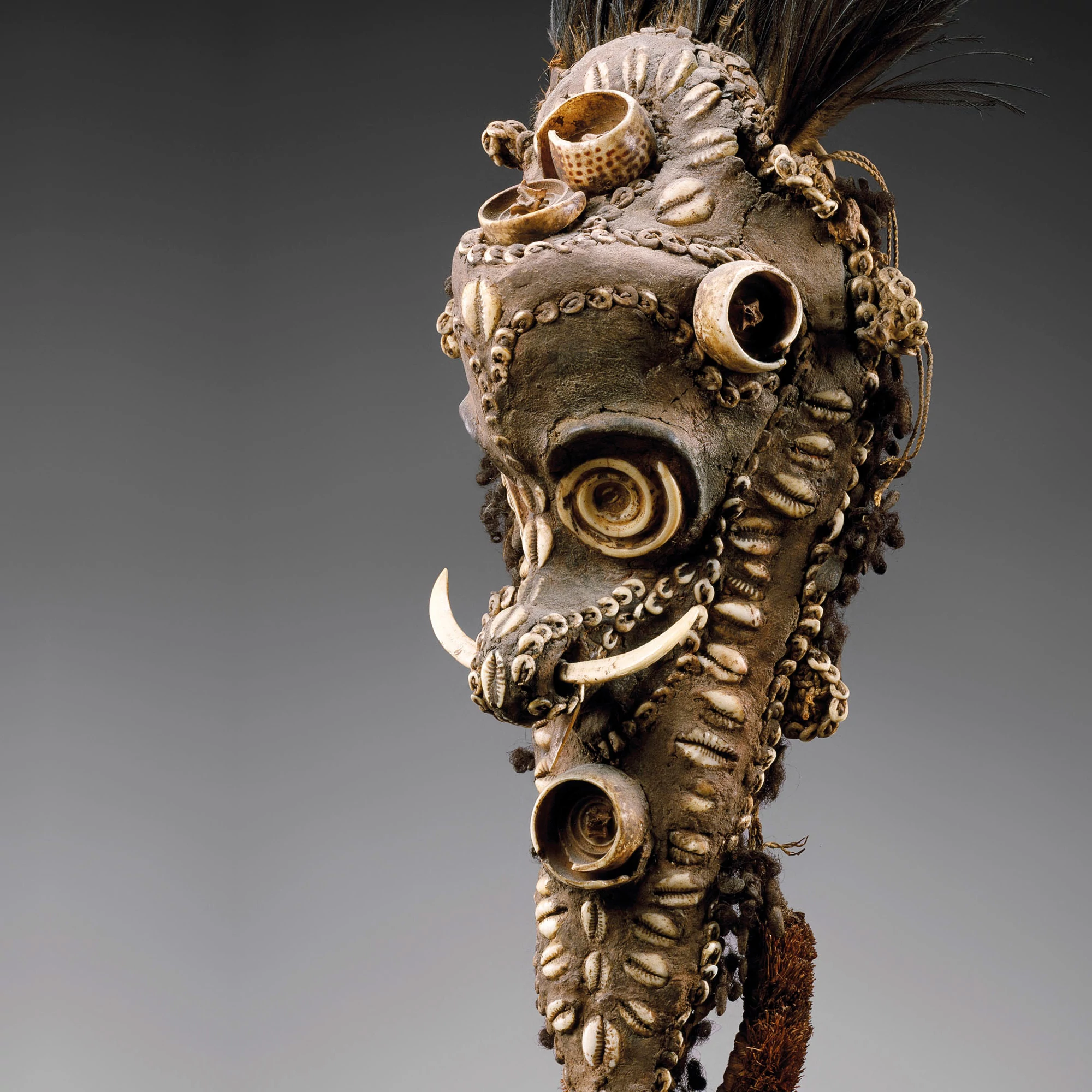Oceanic Art
10,000 islands, 1800 cultures and languages


For more than 3 millennia, the Classical Oceanic cultures had flourished among the volcanic islands of the Pacific Ocean, developing remarkable systems of navigation and venerating their seafaring ancestors in sculpture, apparel and ritual masks.
So why does this chapter begin at the dawn of the Industrial Revolution? While the newly-invented blast furnace forged steel for early skyscrapers, it’s the steam engine that provided the Western world with a window into Oceanic culture. Oceanic artisans were creating artwork as they had for thousands of years—wooden figures and decorative architecture carved with the adz and engraved with boar’s teeth and animated with vegetable pigments. They created musical instruments in clay, hammered and polished stone sculptures and wove textiles from flax and banana fiber. And with the proliferation of trans-continental travel, Oceanic art was preserved for the first time.
The arrival of the first Spanish ships in 1527 had brought first trade, then colonization to Oceania, as well as the first exports of artwork from Polynesian, Melanesian and Micronesian cultures. The so-called primitive artwork captured imaginations around the world, and for the first time, artwork that had been ephemeral for thousands of years was collected and preserved. Today, institutions like the Denver Art Museum and the MET have amassed spectacular collections of Oceanic artwork, and while nearly all of it dates to the early 1800s through the 1950s, it is the product of millennia-old traditions.